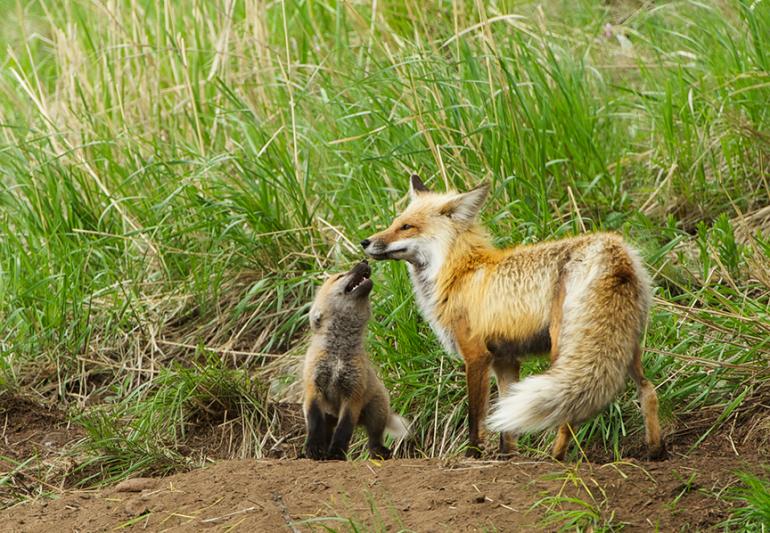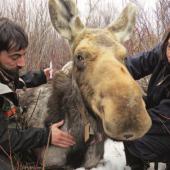The Cattiest Canine
The red fox's feline traits explained
A red fox is not actually part cat, although they do possess various traits that can make people think otherwise. One of three wild canine species in southwest Montana, this highly-skilled, bushy-tailed hunter evolved side-by-side with the grey wolf and the coyote, so why is it the only one with semi-retractable front claws, vertical-slit pupils, long whiskers, and other feline traits?
Evolutionary biologists suggest that the red fox developed certain traits for the same reasons as cats: nocturnal activity and choice of prey. Vertical-slit pupils are believed to provide daytime protection for the eyes of some nocturnal animals, and long whiskers may aid in stalking and killing small prey.
Weighing between 10 and 15 pounds, the red fox relies on stealth to hunt rodents and insects. With claws retracted, the fox moves in near silence on its sensitive, furred feet. With claws exposed, this hunter captures and pins small prey, and even climbs trees in search of a meal. Like a cat, the fox uses long, thin canine teeth to bite and dispatch victims.
You may have watched kittens or cats play with a mouse or other prize, repeatedly letting it escape before recapturing it. Red foxes have been observed doing the same thing, sometimes tossing and catching the animal even after it’s dead. This type of play provides the hunter with information on the movements of prey, and how to execute a successful strike with its front feet.
Red foxes have adapted to harsh conditions in a variety of environments, giving them a high survival rating through cruel winters. When small rodents are hidden under hard snow, red foxes will leap and come down headfirst to break through the crust, their acute hearing pinpointing the rodent’s exact location.
While coyotes and wolves are famous for their vocalizations, adult foxes rarely make a sound—a crucial trait for stalking prey and avoiding larger predators. Young kits, however, spit, hiss, and cry just as young felines do. When threatened, red foxes arch their backs, raise their fur, and adopt a sideways stance, just like a cat.
The red fox might well be the most contradictory animal in southwest Montana. A dog that acts like a cat? Guess you have to see it to believe it.
Viewing tips
Because the red fox is omnivorous and highly adaptable, it can be found in a variety of environments. When searching for these elusive canines, stay as quiet and still as possible. Dusk, dawn, and sunny winter days are the best times to spot them. Meadows, woods, and the edges of woodlands are preferred habitats—look for evidence of rodent populations. Yellowstone Park’s north end from Tower Junction to the east end of Lamar Valley is a prime location throughout the year.












